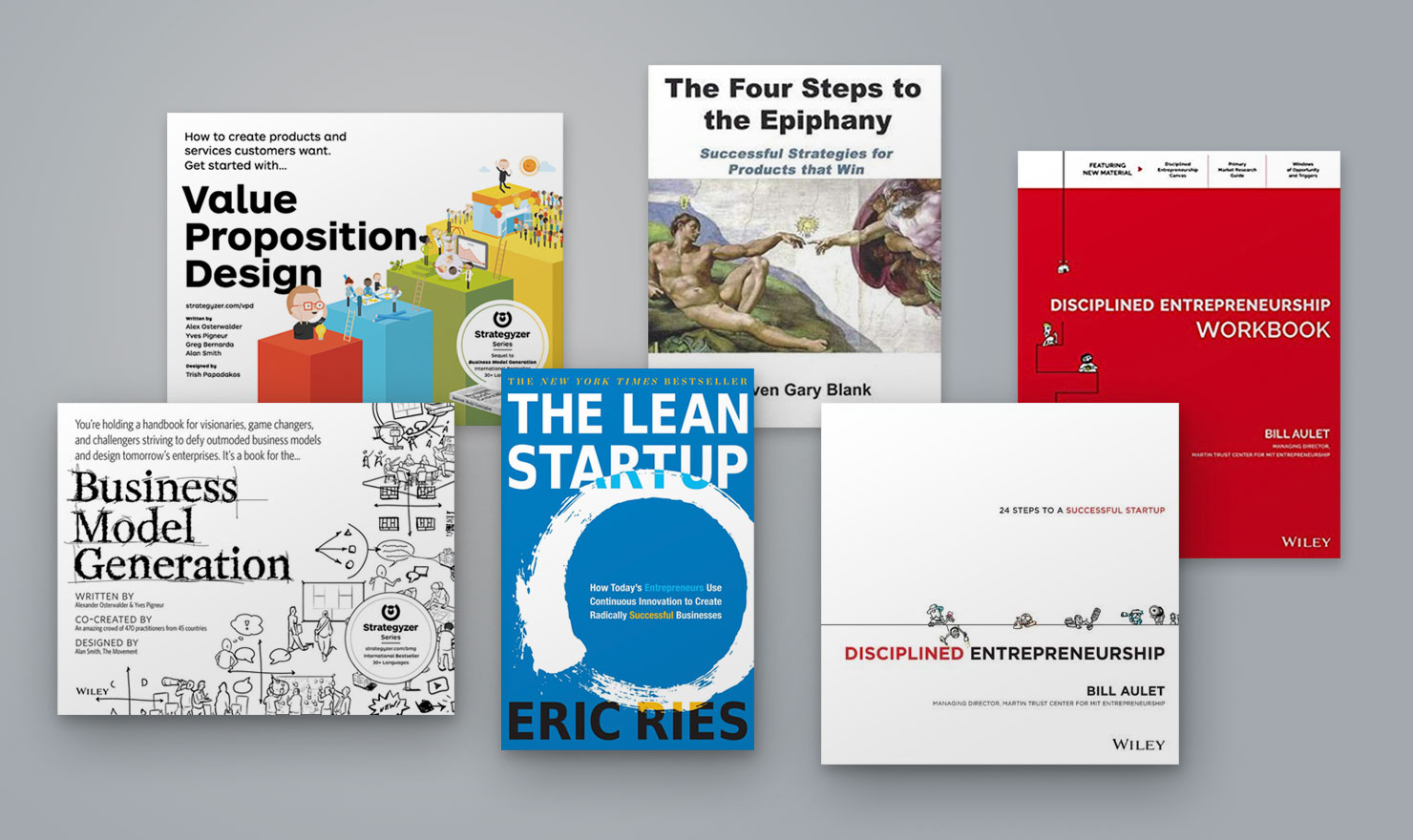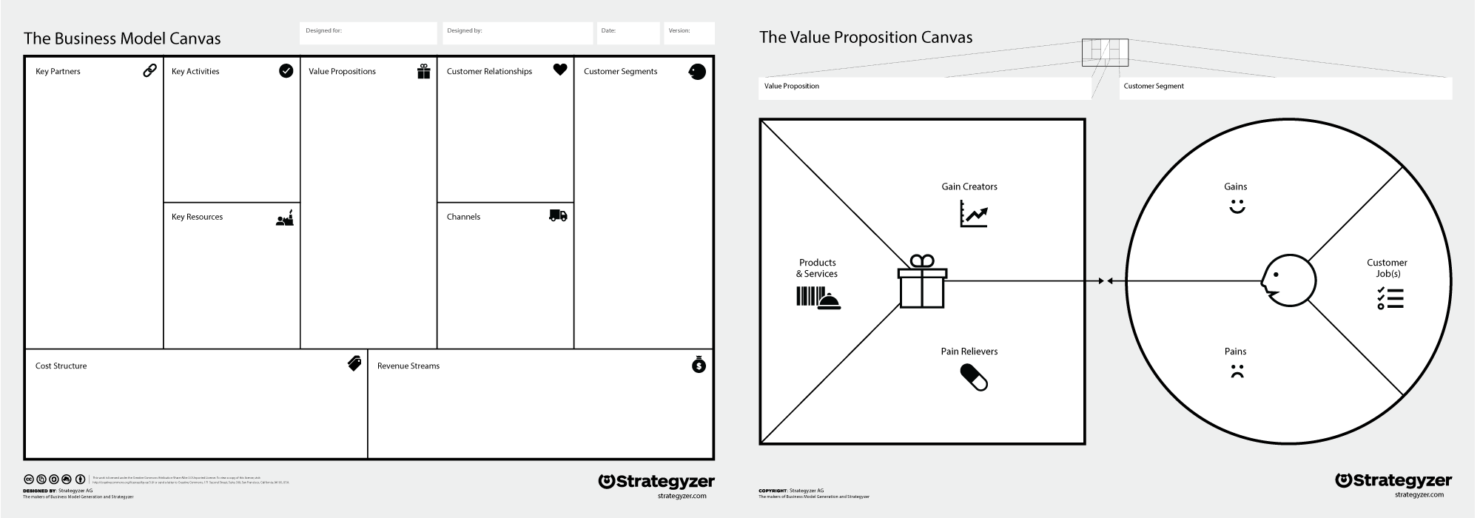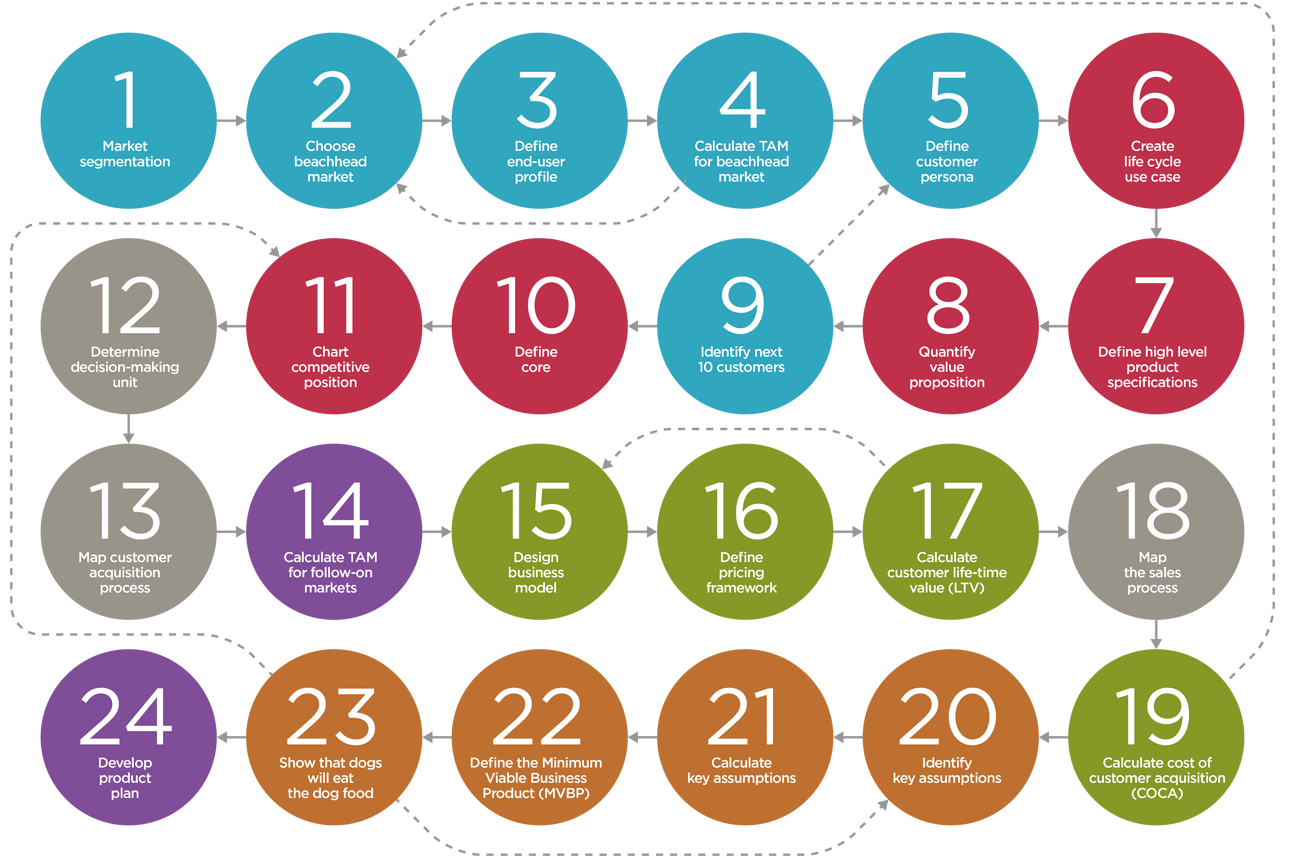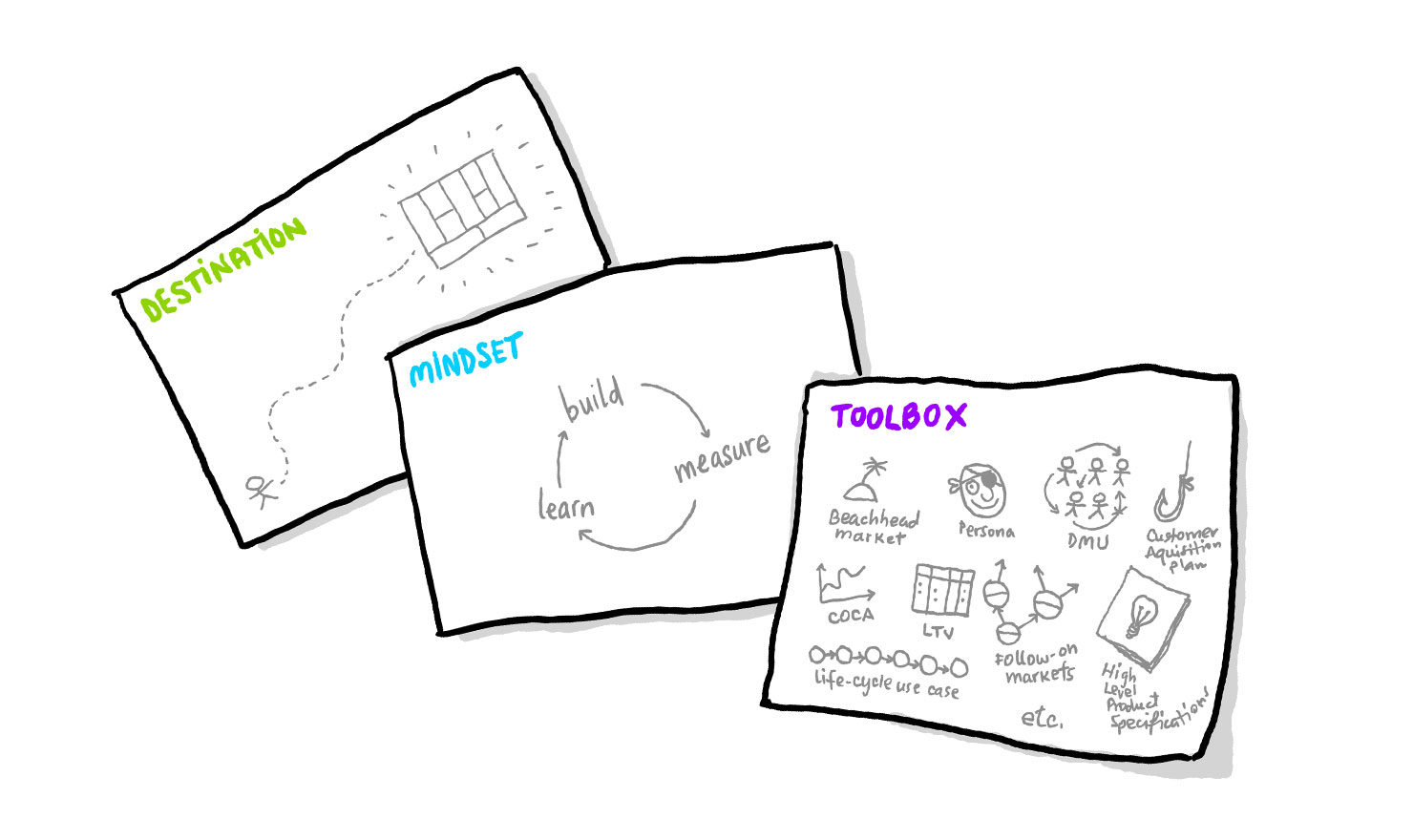First published on Metabeta in 2019
Startup is a word that gets tossed around a lot and its definition takes on many forms. It’s a state of mind, a disruptive business, a new budding venture, and many other things. Yet there are no set of rules to the game, no magic recipe for success, nor scientific approaches, in spite of all the thousands of books and gurus (including us 😜) that address this topic.
That’s why I’ve decided to take a deeper look at the most popular and widespread approaches to building innovative companies.
Startups are anything but traditional businesses
First, let’s do a brief comparison of how building a startup is different from building a traditional business.
Growth vs Scalability
Typical brick and mortar businesses usually aim for steady revenue. They think about the best ways to get and maximize profit. To grow, they have to hire new people and get new resources, which makes the growth stable and linear. You’ll rarely see exponential growth in their case.
The startup approach is a bit different. Most startups rely on building technology products. This means that growth is not proportional to the number of employees or physical resources. Scalability is almost always top-of-mind, that’s why everyone dreams of becoming a unicorn in the startup world.
Existing markets vs disruption
Think travel agencies vs. Airbnb, taxis vs. Uber, cable vs. Netflix. Traditional businesses usually tap into existing markets and have a myriad of examples to follow. Customers are already familiar with the types of products and services they provide.
Startups want to make a splash in these markets. Their purpose is to improve parts of the day to day activities that I didn’t even know need improvement. But walking on roads that others haven’t walked before is dangerous, and most startups die on the way.
Dealing with uncertainty
This is the cause of death for most startups. The old business school approach to starting a venture requires you to create a business plan and jot down the first 3 to 5 years of your company’s life. Which is fine for traditional businesses. Where you can benefit from other people’s experience and knowledge, and use it to envision the company’s life.
Not so much when you’re trying to innovate. The traditional business plan is static and when applied to startups it provides no real way to measure ROI and financial projections. Eric Ries, probably the most famous theorist in the startup world gives the best definition of a startup. Ever (in my humble opinion):
“A startup is a human institution designed to create a new product or service under conditions of extreme uncertainty.”
Eric Ries, Lean Startup.
Searching for sanity
All these differences make startup building a rather adventurous and unsuccessful activity. Luckily, in the past decade, frameworks that are more tailored for startup’s specific needs, have emerged. Among them, the most popular ones are:
- Business Model Canvas (2010) created by Alexander Osterwalder and Yves Pigneur.
- Lean Startup (2011), coined by Eric Ries based on lean manufacturing and Steve Blank’s “Customer Development Model”.
- Disciplined Entrepreneurship (2013), developed by Bill Aulet based on his experience nurturing startups out of MIT for more than 9 years.

Each one of these methodologies was created with flexibility in mind. They provide a solution for the uncertain nature of innovation-driven enterprises, solving a lot of problems. Through them, you’re encouraged to test. Iterate. Adjust. You build your company knowing real market needs, based on feedback and in-depth research. They expose a much clearer path to success, long needed in a sector where uncertainty is often the only certainty.
Tools for the real world
These startup frameworks seem great when you read these books or attend the courses. In real life, things are very different from the precise process in books. I’ve seen it while mentoring and advising hundreds of startups, accelerators, and incubators, in the US, Europe, Asia, Oceania. Everywhere.
The newness of these frameworks means I don’t have enough data to tell whether they’re the reason why some startups succeed while others don’t (let’s not forget about the survivor bias). The percentage of startups failing still goes as high as 90%. Is it because of existing flaws in these methodologies or just human nature? Unlike religions, there is little room for one startup bible. And I’ve found out that blindly following only one of these methodologies creates exposure to their flaws and increases the risk of fragility.
In my view, the startup journey resembles the journey of explorers to uncharted territories or the Gold Rush to the American Wild West. These explorers had little use for Bibles (except for psychological comfort, maybe) but were in great need of maps, tools, and new mental models. Thus, my analysis looks at how these startup frameworks fare at this.
Business Model Canvas
The Business Model Canvas is a chart that allows you to create a more visual representation of what the business should look like. It maps out key features, the product design, and, once completed, it tells you the exact key points that you need to address when building your company. The Value Proposition Canvas comes as a follow-up but is an integral part of the process as it helps you understand your customer first and how you can create value for them.

“The same products, services or technologies can fail or succeed depending on the business model you choose. Exploring the possibilities is critical to finding a successful business model. Settling on first ideas risks the possibility of missing potential that can only be discovered by prototyping and testing different alternatives.”
Alex Osterwalder, creator of the Business Model Canvas.
Pros
- Provides a visual, easy to understand overview of how the company will look and how it creates, delivers, and captures value in relation to the customers. People at various levels of the organization can share the same vision and mission. It’s easy to understand even for people without any business experience or education.
- Focuses on how the value flows throughout the business regardless of the stage of development, the business offering, or the intricate details of strategy implementation. This helps to “keep the main thing the main thing” (i.e. focus on important aspects) when reviewing any decisions that impact the business.
- Through the Value Proposition Canvas, it helps with understanding the customer beyond simple marketing parameters. It tries to create empathy for the users to help the business owners understand the core value of what they are building.
Cons
- It’s a map of the destination, but with no compass or specific tips on how to get from point A to point B. There is also little information on how to validate if the destination is feasible, especially for startups dealing with uncertainty)
- It has a fixed architecture (nine building blocks that need filling in) which may be less clear or relevant to tech startups. In their case, a deep understanding of the relationship might not be as relevant in the early stages. Key activities are somewhat redundant with key resources. Ash Maurya has adapted this to a much better version for startups, the Lean Canvas.
- Being very minimal, it can give a false impression to beginner entrepreneurs that “they have it all figured out”. As a result, they jump into building their product or solution—similar to taking a map for good and putting all your efforts into walking towards the presumptive destination.
Lean Startup
Lean Startup is a methodology that encourages you to always ask and never assume. To push forward your minimum viable product, to test things and adjust as required, and to keep your user at the center of it all. The Build—Measure—Learn feedback loop is a core component of this framework. It emphasizes more on having the right attitude and mentality, rather than what steps need taking.
“The ability to learn faster from customers is the essential competitive advantage that startups must possess .”
Eric Ries, The Lean Startup: How Today’s Entrepreneurs Use Continuous Innovation to Create Radically Successful Businesses
Pros
- The framework provides the right mindset for entrepreneurs to deal with uncertainty. It focuses on experimentation through defining assumptions, testing them, then iterating their approach (the build-measure-learn cycles).
- Focus directed at user/customer in the customer discovery and customer development stages.
- Introduces important concepts as Minimum Viable Products and pivoting. These concepts are counterintuitive (if not outrageous) for someone with a traditional business, where success is often a result of marginal improvements and persistence.
Cons
- By promoting “accountability through learning” as a concept without a clear discipline or guidelines on how to implement it, it gives entrepreneurs a false illusion of progress through failure. A startup should not be an educational opportunity first, and learning should be a byproduct of the journey, not the main goal.
- It encourages focus on product vs business (build/measure/learn). Although Ries gives good examples of the MVP and pivoting criteria, these concepts are mostly applied by founders as an excuse to stay in the comfortable zone of building products or technologies, after only a superficial understanding of customers. The lean management process is effective in a more mature company (Ries took and expanded on the lean manufacturing perfected by Toyota) but presents higher risks for startup teams. In more mature markets or deep tech, MVPs need a lot of time and resources to build. To keep with our explorers’ metaphor, it’s like giving them the mind and heart of an explorer, but then letting them wander around forever. Getting them excited about the travel and views, but with no understanding of the destination, or the perils and strategies of the journey.
- While the mindset and examples are spot-on, the process leaves a lot of room for founders to avoid hard questions and take the wrong approach. The Lean Startup philosophy asks to identify assumptions first, then set clear metrics for validating them, and only last to define and build the experiment. But in real life, things happen the opposite way. If you know any lean entrepreneurs, more often than not they would get excited about a product feature, then choose a metric based on what they build, and only then try to link it to an assumption—to “comply” with the lean label. It is not a flaw of concept, but of implementation. Luckily, in his Running Lean book, Ash Maurya presents a better process of how to implement a lean mindset. Maurya presents a better process of how to implement a lean mindset. The only thing to remember is that like in physics, experiments can only invalidate most hypotheses. But where do I find those founders who are willing to try to kill their “baby” to be successful?
Disciplined Entrepreneurship
Disciplined Entrepreneurship is a structured approach that guides the starting entrepreneur through specific actions that need to be taken before jumping into developing the product or service. This methodology shows how innovation-driven entrepreneurship can be broken down into discreet behaviors and processes which can be taught in just 24 steps.
“The single necessary and sufficient condition for a startup to succeed is a paying customer”
Bill Aulet, MIT Sloan Professor, Disciplined Entrepreneurship author

The methodology introduces to the startup world useful concepts such as beachhead markets, personas, high-level product specifications, quantifying value, decision-making units, and many more. They are not only presented in an easy to understand way but are linked with the author’s experience as a serial entrepreneur and highly adapted to tech innovation.
Pros
- The focus is on the business side of a startup (customer segmentation, use cases, pricing strategy, decision-making on the customer side, etc.). Through it, you identify potential customers, research their pain points, and the sales process. It contains most aspects of the Business Model Canvas but goes more in-depth for a proper understanding. This methodology overlaps with the Lean Canvas approach in identifying and testing key assumptions—but with the purpose of building a Minimum Viable Business Product, that will prove not only that the solution is usable, but that it can generate revenue.
- It is a clear and detailed map of the territory from the first step to the last one. It goes very in-depth with details, which is useful for people with no previous business experience or degrees.
- It’s based on Aulet’s venture experience and his work with hundreds of innovative startups out of MIT. Focuses on numbers and process to reduce uncertainty and keep people on the right track.
Cons
- Being taught in educational contexts, the steps metaphor gives the false impression of a linear process. Real-life is more chaotic. While Aulet explains in the book and the visual representation of the framework that it is iterative, most founders feel lost after they’ve reached step 22, where they find out that their assumptions were wrong and need to go back to square (or step) 1.
- Requires a lot of effort in dealing with multiple unknown business variables before getting to the enjoyable part of the process (building the product or technology only starts towards the end of the process). This makes it very likely for founders to quit figuring out all the details. The fact that “It takes months but may save years” (as I often tell founders I work with) doesn’t make it very appealing. I usually recommend founders to go through the whole 24 steps with their team in one day (to have a superficial but 360-degree view of their startup). After that to go in-depth over the next week. And, finally, focus on the areas that are most relevant to their situation.
- It focuses on the path on the map and the tools in your backpack, not on how to be an explorer or the clarity of the destination. That creates the risk of short-sightedness. This is fixed with the new concepts and the Disciplined Entrepreneurship Canvas in the sequel workbook.
And now what?
An in-depth overview of the methodologies reveals a hidden truth: none of them is universally valid. As I said, there is no one Startup Bible that guarantees redemption from uncertainty and the perilous journey. Each of them focuses on very different aspects of a startup. Using them together, as different tools and toolboxes in the arsenal of an entrepreneur, is the best approach to building a successful venture. Instead of choosing one and hope for the best possible outcome, I would recommend combining them.

The combined approach
Start planning your journey by using the Business Model Canvas or the Lean Canvas. Understand your destination before anything else, and your motivation (because that is what is going to keep you and your team together on the path when things get hard). A moonshot or North Star is more important than anything. But then what matters are the first steps.
Understand how Lean Startup works, how to start discovering customers. Get out of the building and talk to them, no framework or toolbox is going to replace that. Create the profile of your persona using the structured framework Disciplined Entrepreneurship provides. Get to know your customer. Your beachhead market. Your TAM (what?). The information that results from following the first steps of this framework is more detailed and provides more insights into user/client needs and it will make it easier for you to work with the Value Proposition Canvas or the empathy maps from Ideo.
Use our Problem Statement Canvas to understand the problem without considering any solutions. Then go back and adjust the nine blocks of the Business Model Canvas. Then go more in-depth, trying to go to the level of detail in the Disciplined Entrepreneurship Canvas, by going through the steps of the framework. Don’t start building the product yet, I know you have that itch. Get to understand your assumptions first, only then define the metrics and experiments, based on the Running Lean process, which is the best implementation manual for the Lean Startup philosophy. Don’t build an app when you can build a landing page, or Powerpoint, or Kickstarter campaign. Don’t build an AI if someone in your team can do it using email and a spreadsheet. Have them pretend they are THE chatbot to validate it’s a business first before you start writing code.
Not linear and sequential, but iterative
Make small improvements based on user feedback, not on your grandiose vision (you’re not Steve Jobs or Elon Musk, although you could be better). But don’t focus just on the product. Building a business is much more important and people often overlook that. And don’t spend time listening to the advice of mentors, authors, or gurus (like myself 😜)—instead, listen to your customers. Then do it again.
Startups are all about the unknown. And flexibility. And testing. There is no one right formula for becoming successful and any entrepreneur looking to start an innovation-driven enterprise should know in advance that fixating on one tool to solve all problems is rarely the answer. You wouldn’t leave on an expedition taking only one thing with you (as long as it’s not a spiritual or religious one), so don’t be a blind follower or zealot of any startup trend.
Think for yourself and choose your tools wisely, because every journey is unique!
Happy to further discuss this anytime. Reach out on LinkedIn or add your comments below!
The author
Marius Ursache
A serial entrepreneur, designer, and former doctor, Marius is the CEO and founder of Metabeta, a data-driven portfolio management tool for tech investors and accelerators.

The Disciplined Entrepreneurship Toolbox
Stay ahead by using the 24 steps together with your team, mentors, and investors.
The books
This methodology with 24 steps and 15 tactics was created at MIT to help you translate your technology or idea into innovative new products. The books were designed for first-time and repeat entrepreneurs so that they can build great ventures.

How relevant was this article to you?
Click on a star to rate it!
Average rating 4.8 / 5. Vote count: 103
No votes so far! Be the first to rate this post.
We are sorry that this article was not useful for you!
Let us improve this post!
Tell us how we can improve this post?

Thank you so much Marius. This is an exceptional outline of the journey to become an entrepreneur. Your insights and experiential guidance really bring clarity and confidence to people who are starting or want to start the journey. There is a great need to understand a practical holistic approach in this field, Please keep sharing similar insights in the future.
Marius,
Thank you for putting these powerful concepts and tools into a clear overview…this helps my students learn how to use them more effectively!
All the best in health and spirit,
Prof. Mike Grimshaw
Thanks for this Marius, this is really helpful and re-assuring for a start-up aware of all of these tools and trying to figure out how to progress without becoming a slave to the process. I really like the problem statement canvas – we’re using this to iterate to the beginning to get real clarity and focus on what the right problem is for us to solve!
I’m a big fan of your book. I did start with it 2 years or so back, but as you said, I wanted to get to the enjoyable part of the business.
We used spreadsheets as electronic medical records, template websites, and whatsapp business for client support.
Now that we have paying customers, we are finally building our proprietary product. I still sometimes wonder if I actually need to continue building a platform, the current one works just fine. Advisors cite data ownership, privacy, and scaling as pros.
Reviewing the steps now, my team and I have touched on many of the steps in real life. This will make going back to your book even more exciting !
Thanks again for a very well written piece, Bill.
It clarified a lot to me. I’m super interested in the topic and, as a scientist, I love going to the sources and understanding the research and data behind each tool. Along the way, we are faced with several tools, which makes the decision journey even more difficult.
The text, in addition to being humorous :D, masterfully presented each tool and its “positive” and “negative” points. My feeling is one of gratitude for receiving quality content like this. Thanks!
I really like the idea delaying the development of a product or service only until you have satisfied all other requirements and ensured that it is a viable business. I think that it’s important to thoroughly think through all of the important factors and to test what you can with the least amount of resources (i.e landing page and presentation instead of an app) before committing substantial time and capital to an idea. With that said, I think it would be interesting to ponder why some default to building before thinking.